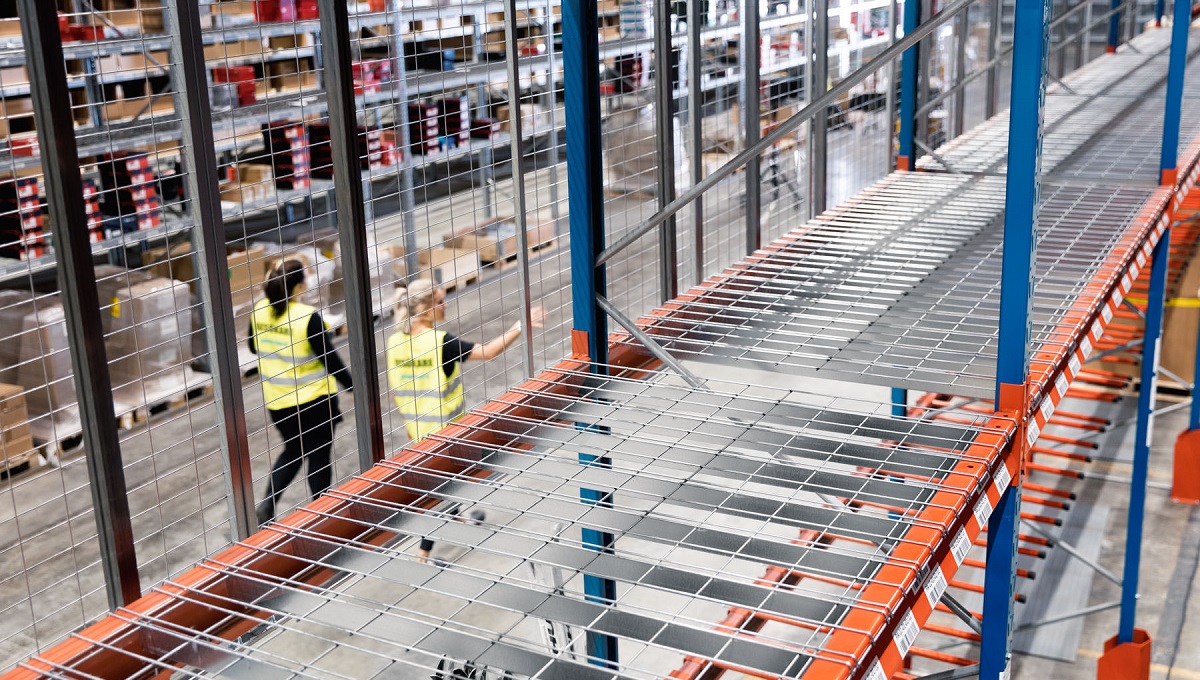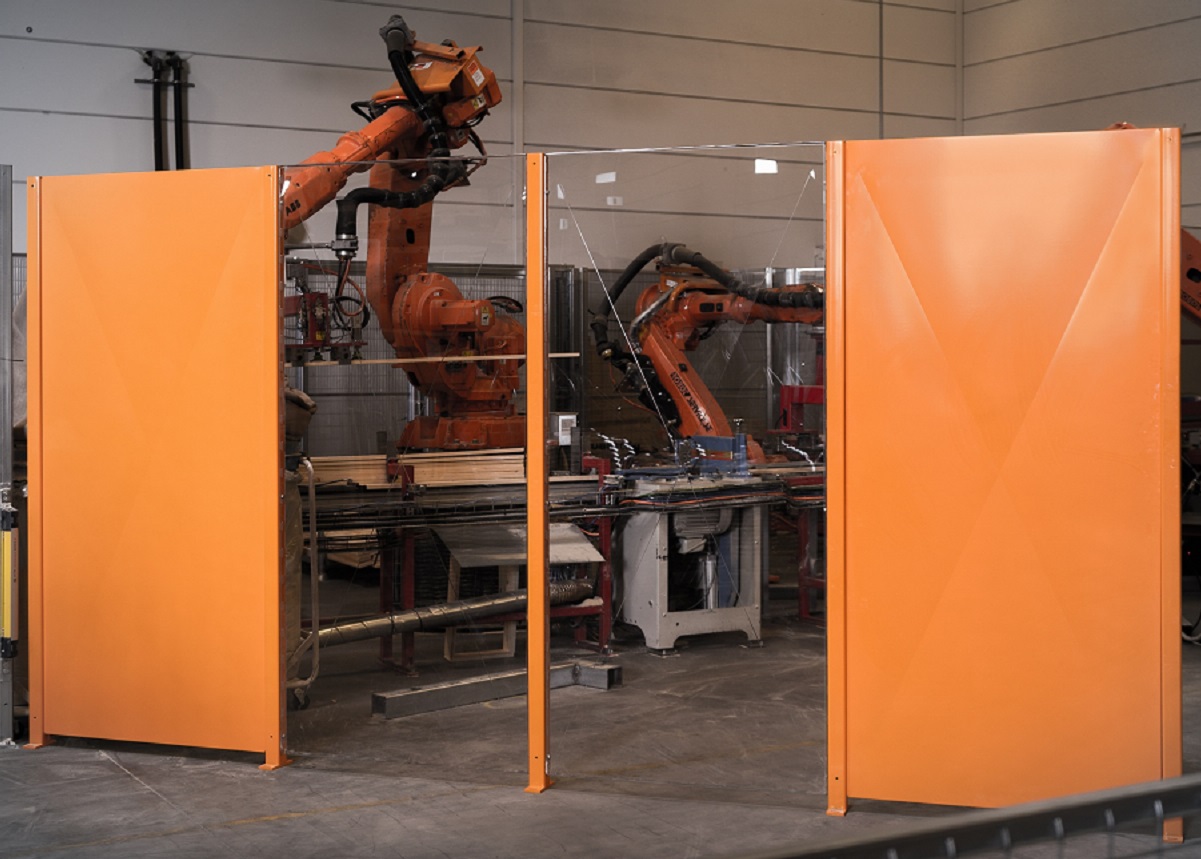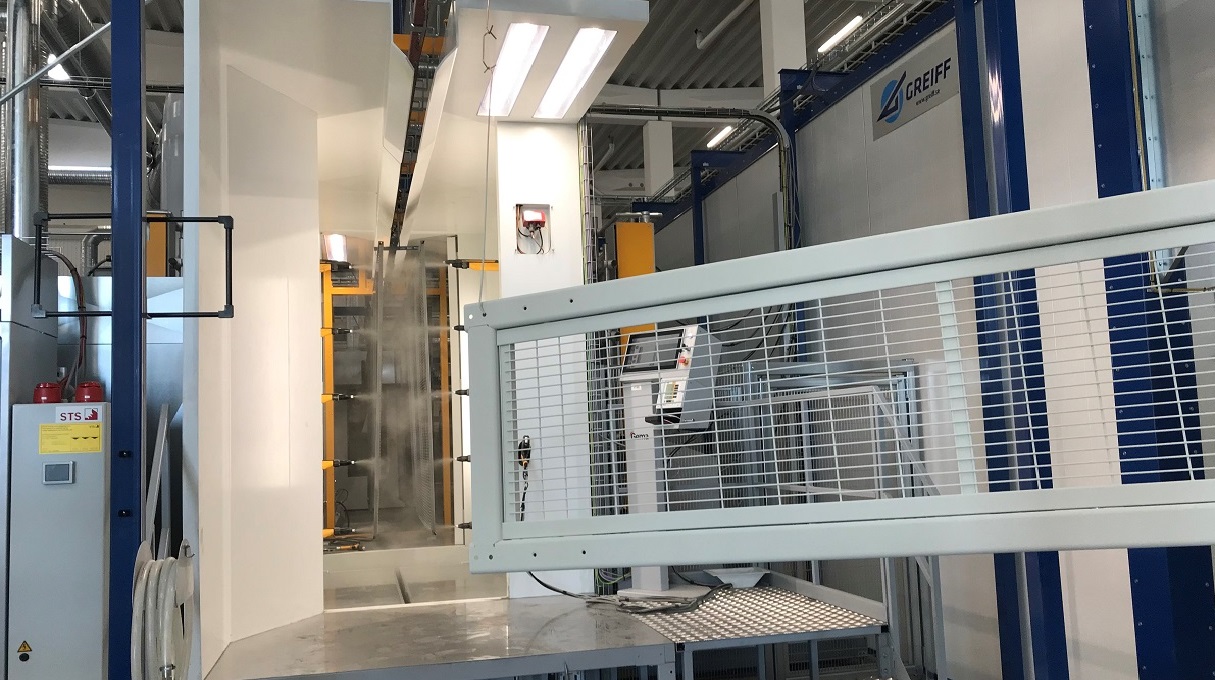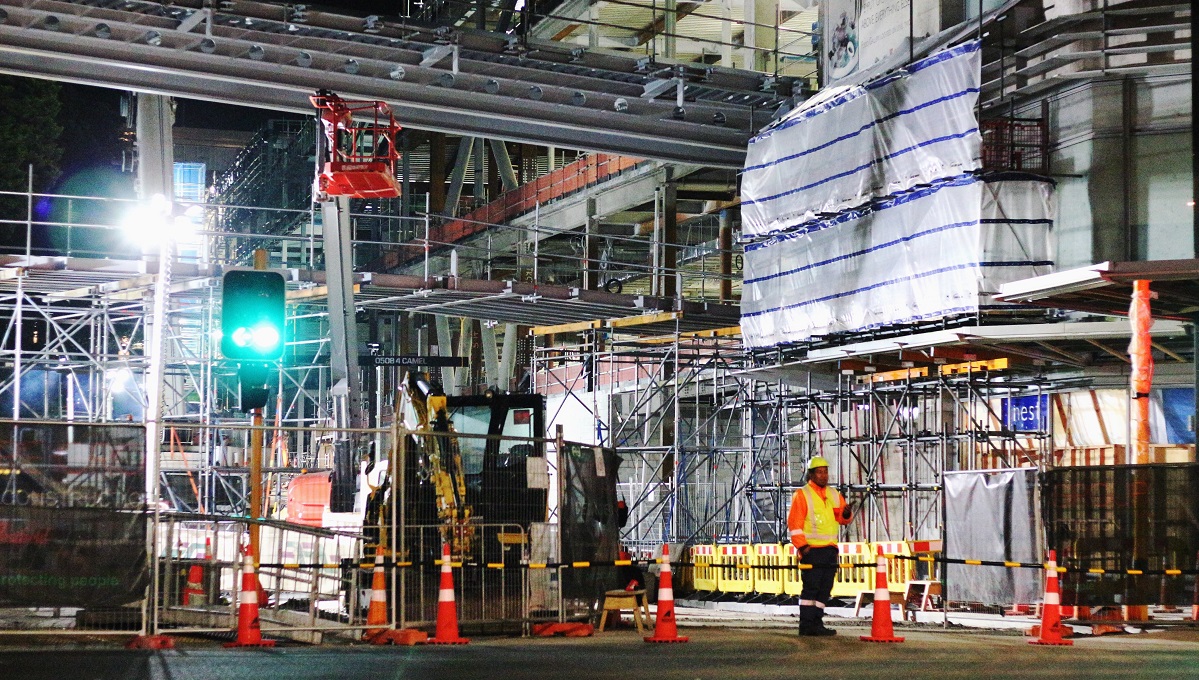Companies invest a lot of money in automating production lines and order picking. They often combine many ambitions. Then down the line come the mesh panels guarding the machines. Creating safety and simplifying everyday life.
But let’s be honest these are considered accessories. It is the whole installation, which has to comply with a set of rules. However, I can imagine it is difficult to see the forest through the trees. Here we will give an overview of which parts of the European Machinery Direction concerns machine guarding.
The machinery directive 2006/42/EC is in place since 2009, and has been modified several times. The goal of European Union's the directive is to create a harmonization of health and safety requirements in the member states. The ultimate why of this regulation is ‘to decrease the social cost of the large number of accidents caused directly by the use of machinery. This can be reduced by inherently safe design and construction of machinery and by proper installation and maintenance’. The scope of the directive is the following
· Machinery
· Interchangeable equipment
· Safety components
· Lifting accessories
· Chains, ropes and webbing
· Removable mechanical transmission devices
· Partly completed machinery
In article 1 are some exceptions included such as parts of amusement parks…
These regulations are described in article 5
1. Before placing machinery on the market and/or putting it into service, the manufacturer (or his authorized) representative shall:
(a) ensure that it satisfies the relevant essential health and safety requirements set out in Annex I;
(b) ensure that the technical file referred to in Annex VII, part A is available;
(c) provide, in particular, the necessary information, such as instructions;
(d) carry out the appropriate procedures for assessing conformity in accordance with Article 12;
(e) draw up the EC declaration of conformity in accordance with Annex II, part 1, Section A and ensure that it accompanies the machinery;
2. Before placing partly completed machinery on the market, the manufacturer or his authorised representative shall ensure that the procedure referred to in Article 13 has been completed.
In a next blog we will elaborate this further, but it is very important to understand that everything starts with a good design. Suppliers can offer a set of solutions, machines, that have all high standards. But a wrong combination of those components can still make them unsafe. So the second step is to remove risk by means of protection. For instance using a fixed machine fence. And finally you can warn or inform about risks. These steps are described in the ISO Standards. First the directive looks at risks related to moving parts.
The directive states in paragraph 1.3.7 and 1.3.8 that
The moving parts of machinery must be designed and constructed in such a way as to prevent risks of contact which could lead to accidents or must, where risks persist, be fitted with guards or protective devices.
All necessary steps must be taken to prevent accidental blockage of moving parts involved in the work. In cases where, despite the precautions taken, a blockage is likely to occur, the necessary specific protective devices and tools must, when appropriate, be provided to enable the equipment to be safely unblocked.
The instructions and, where possible, a sign on the machinery shall identify these specific protective devices and how they are to be used.
Guards or protective devices designed to protect against risks arising from moving parts must be selected on the basis of the type of risk. The following guidelines must be used to help to make the choice.
Guards designed to protect persons against the hazards generated by moving transmission parts must be:
— either fixed guards as referred to in section 1.4.2.1, or
— interlocking movable guards as referred to in section 1.4.2.2.
Interlocking movable guards should be used where frequent access is envisaged.
When you opt for fixed guards in combination with interlocking movable guards you can opt to use Design tool, such as the Garantellator to import your drawing, including all machines to make sure your machine safety guards are designed according to plan. But you still need to pay attention to a lot of details. Especially when there are moving parts involved, which constitutes a serious risk.
The directive elaborates on this topic further in paragraph 1.3.8.2
Guards or protective devices designed to protect persons against the hazards generated by moving parts involved in the process must be:
— either fixed guards as referred to in section 1.4.2.1, or
— interlocking movable guards as referred to in section 1.4.2.2, or
— protective devices as referred to in section 1.4.3, or
— a combination of the above.
However, when certain moving parts directly involved in the process cannot be made completely inaccessible during operation owing to operations requiring operator intervention, such parts must be fitted with:
— fixed guards or interlocking movable guards preventing access to those sections of the parts that are not used in the work, and
— adjustable guards as referred to in section 1.4.2.3 restricting access to those sections of the moving parts where access is necessary.
This means that one has to consider very carefully where to place doors when installing machine guards. When choosing to be able to remove for instance mesh panels for maintenance this should be considered carefully.
The directive give some general requirements, giving you guidelines about the material choice, but also about the colors, you chose for your safety fence.
Guards and protective devices must:
— be of robust construction,
— be securely held in place,
— not give rise to any additional hazard,
— not be easy to by-pass or render non-operational,
— be located at an adequate distance from the danger zone,
— cause minimum obstruction to the view of the production process, and
— enable essential work to be carried out on the installation and/or replacement of tools and for maintenance purposes by restricting access exclusively to the area where the work has to be done, if possible without the guard having to be removed or the protective device having to be disabled.
In addition, guards must, where possible, protect against the ejection or falling of materials or objects and against emissions generated by the machinery.
In paragraph 1.4.2. the elaborate on Special requirements for guards. This means you also have to study well which locking and safety systems you will be using in combination with your machine guarding.
Fixed guards must be fixed by systems that can be opened or removed only with tools. Their fixing systems must remain attached to the guards or to the machinery when the guards are removed.
Where possible, guards must be incapable of remaining in place without their fixings. Interlocking movable guards must:
— as far as possible remain attached to the machinery when open,
— be designed and constructed in such a way that they can be adjusted only by means of an intentional action. Interlocking movable guards must be associated with an interlocking device that:
— prevents the start of hazardous machinery functions until they are closed and
— gives a stop command whenever they are no longer closed. Where it is possible for an operator to reach the danger zone before the risk due to the hazardous machinery functions has ceased, movable guards must be associated with a guard locking device in addition to an interlocking device that:
— prevents the start of hazardous machinery functions until the guard is closed and locked, and
— keeps the guard closed and locked until the risk of injury from the hazardous machinery functions has ceased.
Interlocking movable guards must be designed in such a way that the absence or failure of one of their components prevents starting or stops the hazardous machinery functions.
And you know what, if you now have the feeling I WANT MORE, you can read the complete text here:
https://eur-lex.europa.eu/legal-content/en/ALL/?uri=CELEX%3A32006L0042 .
I can recommend it as light bed reading.

Can we lower the height of the safety mesh here? Can we add hinges and angle the mesh here? Can we increase the clearance as there are conveyor systems that go in and out of the machine here? Can we create a fitting for this type of switch? Yes, of course we can! There’s always some kind of obstacle when creating a safety layout. This can be anything from an uneven floor to the fact that there are already several structures, such as beams, blocking the locations of the safety mesh.

Our product range has been given several updates this spring. We have released new sliding doors for our machine guards. These can be adapted in height and width to suit any project perfectly. Two versions are available: bottom running with free opening height and top rail for larger dimensions.

We have recently installed a completely new powder coating line in our factory, in which objects of up to 2000 x 3000 x 700 mm can be powder coated in any RAL colour. The staff in charge have 50 years of experience in powder coating. This new investment means that we now can offer you an even better and faster service than before – a way of simplifying everyday life.

How many risks are there in the workplace and does a totally safe workplace actually exist? Is it enough to have warning tape on forklifts, should there be specific lines on the floor indicating where forklifts may drive, or should ceiling lights be illuminated to ensure safety?